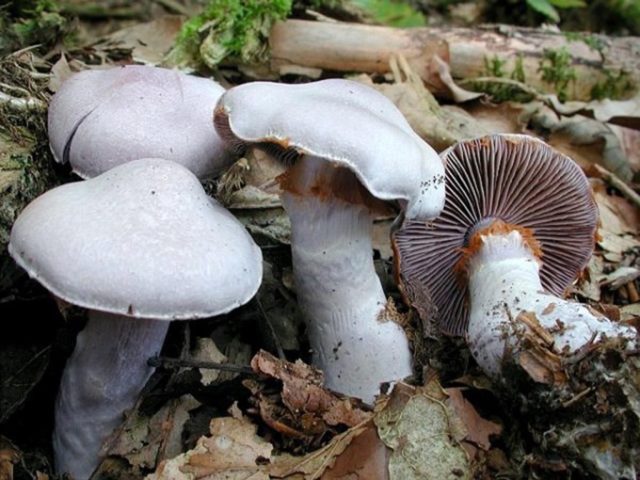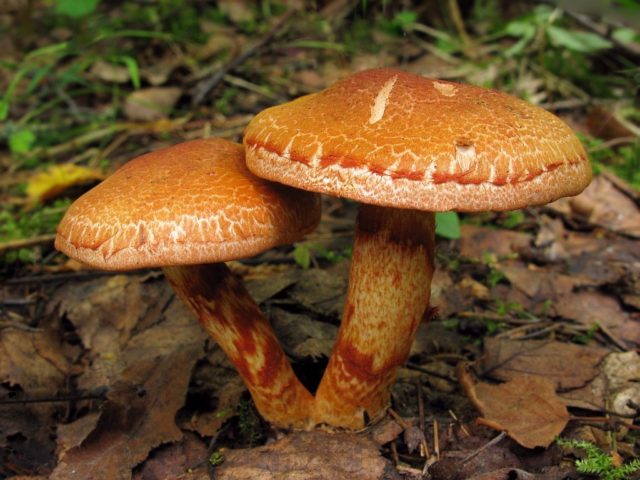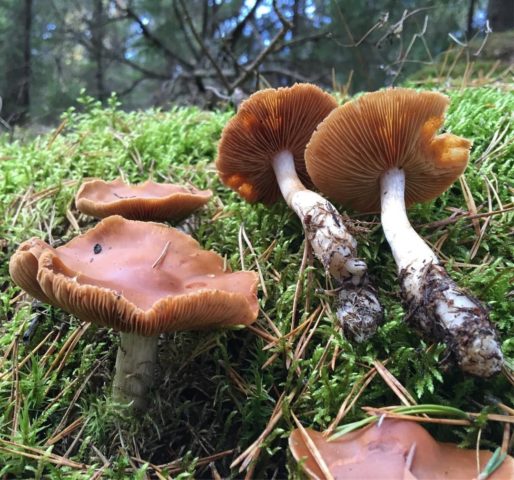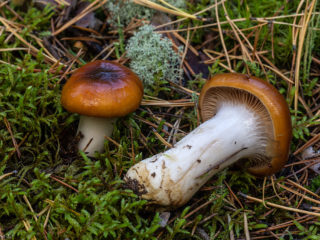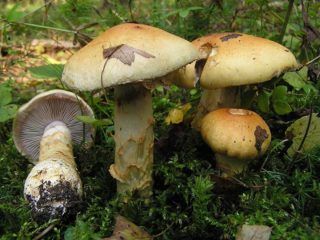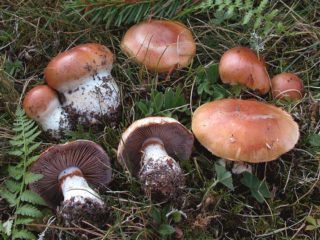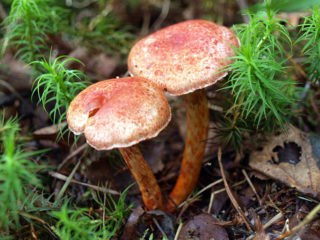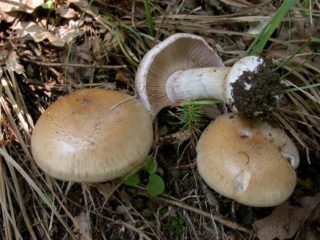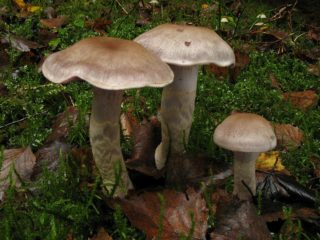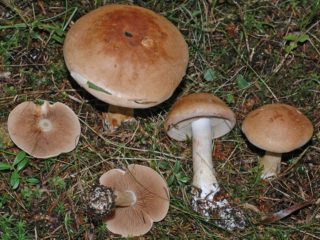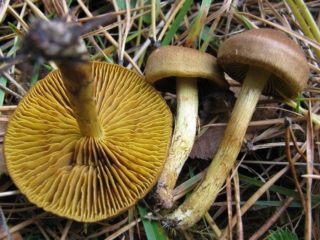Content
The peacock cobweb is a member of the Cobweb family, the genus Cobweb. Latin name: Cortinarius pavonius. You should know about this gift of nature only so as not to accidentally put it in the basket, since it is an inedible and poisonous mushroom.
Description of the peacock web
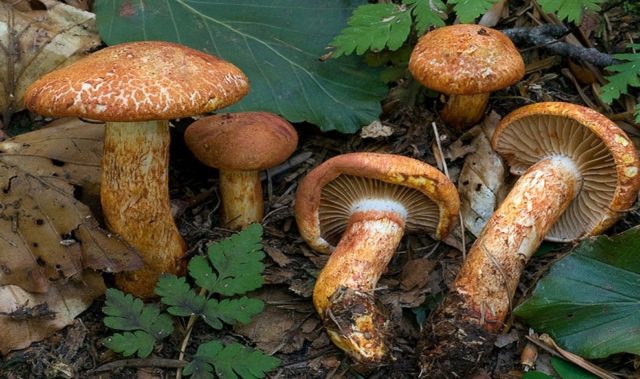
The optimal time for the growth of this species is the period from late summer to early autumn.
The fruiting body consists of a beautiful scaly cap and a strong stalk. The pulp is fibrous, light, and acquires a yellowish tone when cut. It has no pronounced smell or taste.
Description of the cap
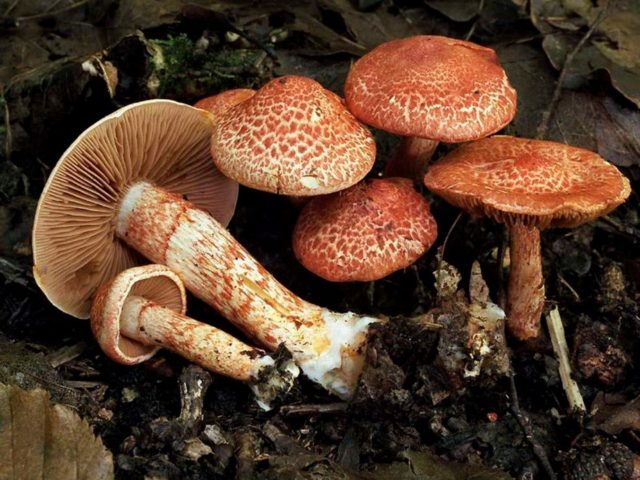
The surface of this mushroom is literally strewn with small brick-colored scales
At a young age, the cap is spherical, over time it becomes flat, and a tubercle appears in the center.In mature specimens, severely depressed and cracked edges can be seen. The size of the cap in diameter varies from 3 to 8 cm. The surface is finely scaly, the main color of which is brick. On the inside of the cap there are fleshy, densely spaced plates. When young they are purple in color.
Description of the leg
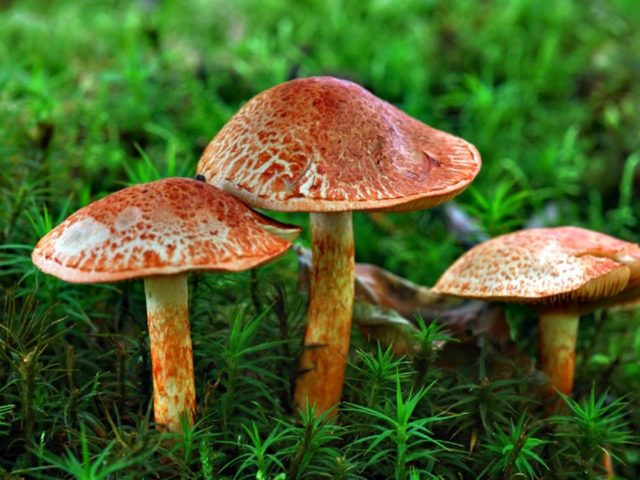
The leg of the specimen is quite strong and thick
The leg of the peacock cobweb is cylindrical, dense, the surface of which is also strewn with scales. As a rule, the color matches the color scheme of the cap.
Where and how does it grow
Active fruiting of the peacock cobweb does not last long - from late summer to early autumn. The appearance of this species has been recorded in many European countries, such as Germany, Great Britain, and France. On the territory of Russia, a poisonous specimen can be found in its European part, as well as in the Urals and Siberia. It prefers hilly and mountainous areas, and forms mycorrhizae exclusively with beeches.
Is the mushroom edible or not?
The peacock web is considered poisonous. This fruit contains toxins that are dangerous to the human body. For this reason, it cannot be used for food.
Doubles and their differences
In terms of external features, the peacock web is similar to some of its relatives:
- White-purple cobweb is considered a conditionally edible mushroom of low quality.The surface of the cap is smooth, glossy, painted lilac-silver with ocher spots, which makes it distinguishable from the described species.
- The lazy cobweb is also poisonous and has a similar shape and coloring of the fruiting bodies. When young, the cap is yellowish, later becoming copper or reddish. It mainly grows in groups in European forests, located in mossy places.
- Orange cobweb is conditionally edible. You can distinguish the peacock web from the smooth, scaleless cap of orange or ocher color. In addition, the double’s leg is decorated with a ring, which the poisonous specimen does not have.
Conclusion
Peacock cobweb is a small mushroom, but quite dangerous. Eating it causes serious poisoning and also provokes negative changes in the kidney tissue, which can lead to death.
